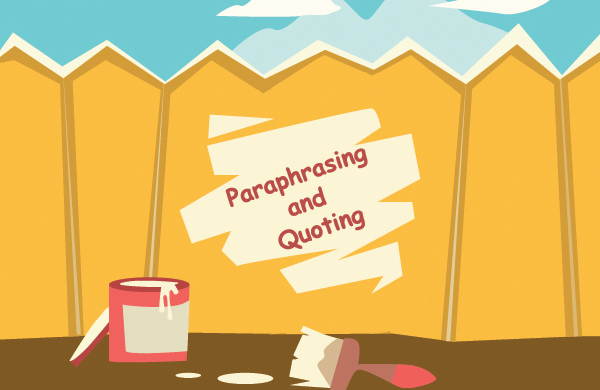The Latin phrase ‘Ignorantia non est argumentum’ means ignorance of the law is not an argument. If you know nothing about plagiarism and how to avoid it, do not be surprised when you are caught and punished. After educators check work for plagiarism, sanctions against violators may vary from verbal reprimand to expulsion – you never can tell what kind of punishment awaits you.
Educational establishments go further and apply for integration of academic plagiarism checker into learning management systems (LMS) for better convenience. The anti-plagiarism software has numerous benefits, for example, checked files are stored in a software library, and educator can use them any moment to compare versus new student works searching for similarities.
This article aims to help you get rid of plagiarism using one of the two most effective writing techniques so that no content plagiarism checker can spot lifted sentences in your paper: paraphrasing and quoting.

What is better: to paraphrase or quote?
The decision will depend on the text you are working with. If your task is to provide a literary analysis of a piece of prose or poetry – you are welcome to use as many quotes as you need because there is no other way to analyze it and prove your thoughts without referring to original sources.
You can quote as much as you need in scientific research to support your statements with appropriate citations, but the main rule is not to overload your work with direct quotes.
Reasonable quoting is a vital thing. Do not miss this point.
Quoting
You’re better off providing only direct quotes – adjust them according to your context, add an explanation, agree or disagree with them, mention the author’s name. Anything but leaving them uncommented will be much more appreciated by your educators.
When quoting, make sure you’ve put quotation marks and indicated the source correctly.
Recommendations on how to quote and how not to plagiarize:
- double quotation marks are used when you apply short direct prose quotations; quotations are inserted inside the text itself;
- long quotations (up to 40 words long) should be put in block form without quotation marks;
- poetry up to 3 lines is to be incorporated into sentences with double quotation marks;
- poetry containing more than 3 lines should be put into block form without quotation marks. Give preference to a short poetry piece instead of a long one;
- include the author’s name before or after a quotation;
- acknowledge original sources and include them in the reference list.
Paraphrasing
You will likely know that rendering somebody’s idea in your own words without attributing the original author is also considered plagiarism. That is why you need to make proper reference to the original source you decided to use whenever you paraphrase.
Common knowledge facts (terminology, dates, personalities, events) do not require quoting, since it is impossible to define who was the first to introduce them, so, you shouldn’t cite them at all.
As for methods, approaches, classifications, etc., naming the author (if s/he is known and you cite an original source) is a must.
Recommendations on how to paraphrase:
- after you’ve read a passage, try to understand its sense precisely or reread it until you can formulate it in your own words without looking at the text;
- do not copy. Give more freedom to your thinking instead;
- take notes, it will be easier for you to write statements based on them;
- use synonyms. Yes, it is not easy to find a synonym to a scientific term, which the author uses, but you can always switch to a descriptive writing method: Add an explanation to these terms;
- change the structure of the original source text (divide it into additional sentences, expand phrases, clarify them), then change the words used by the author, but still do not forget to attribute the source you’ve paraphrased.




